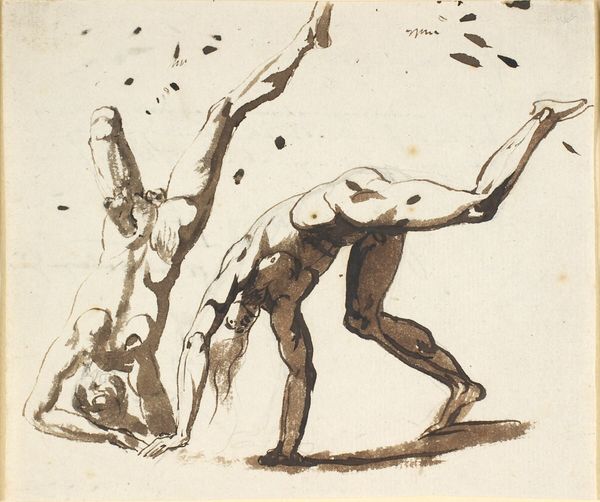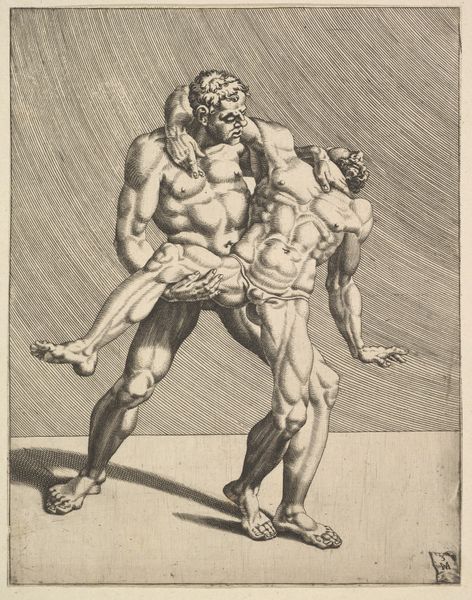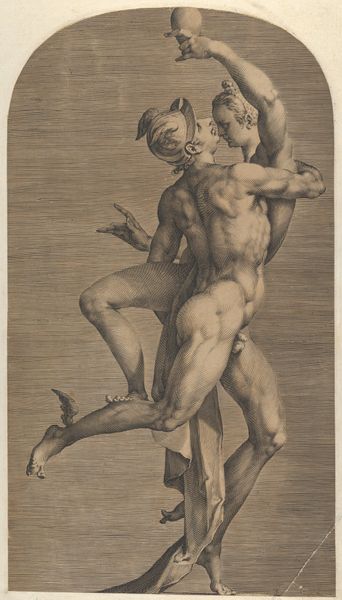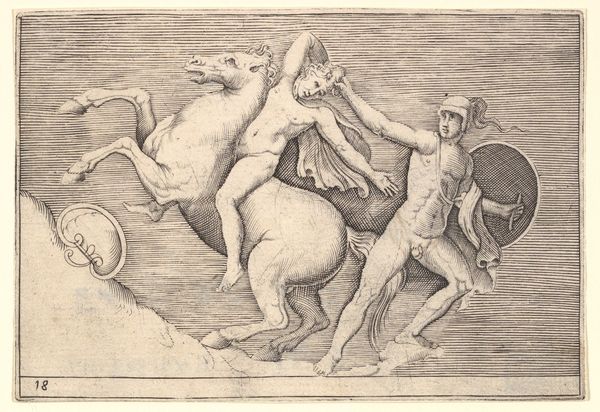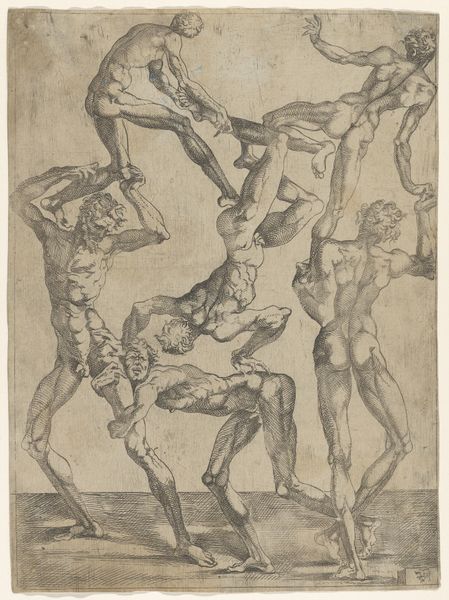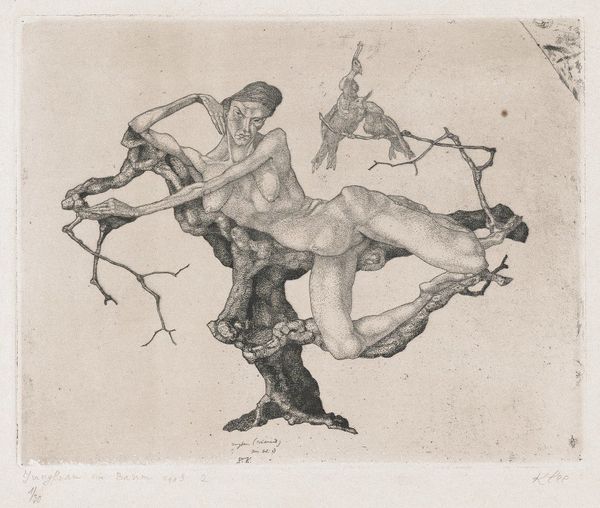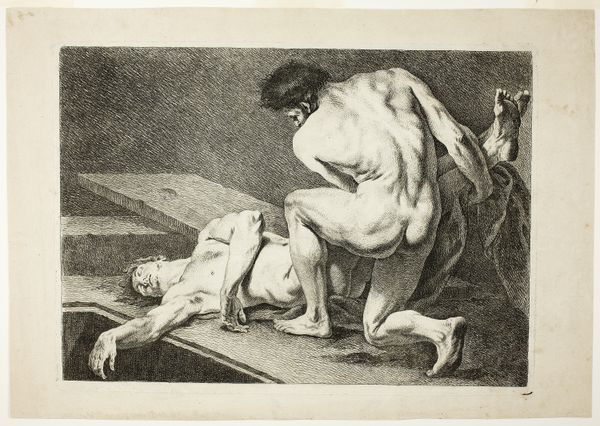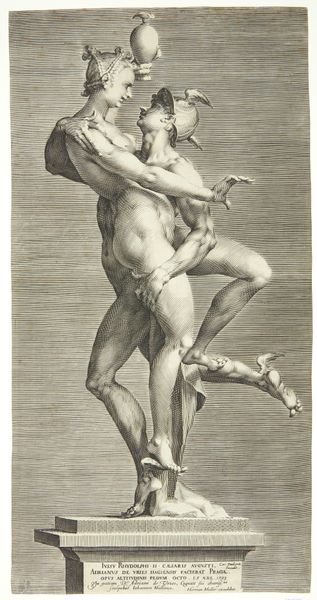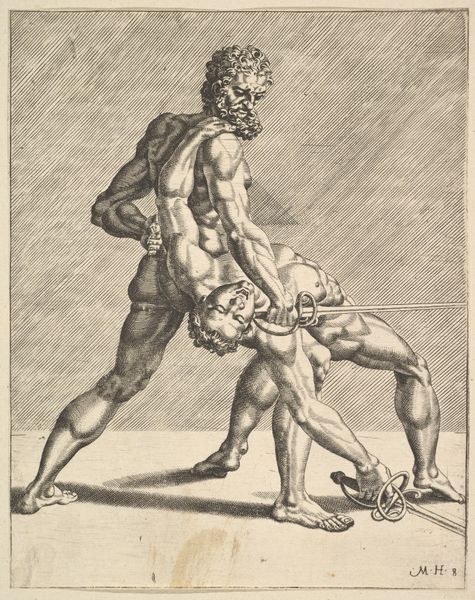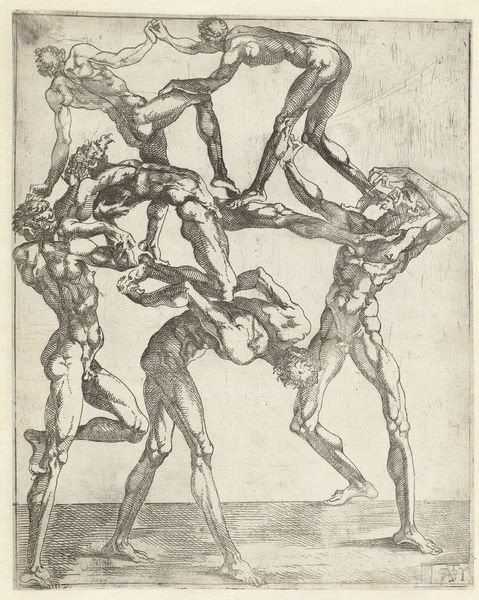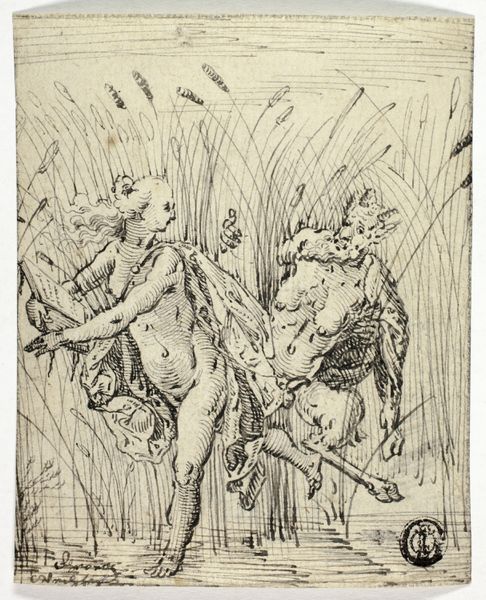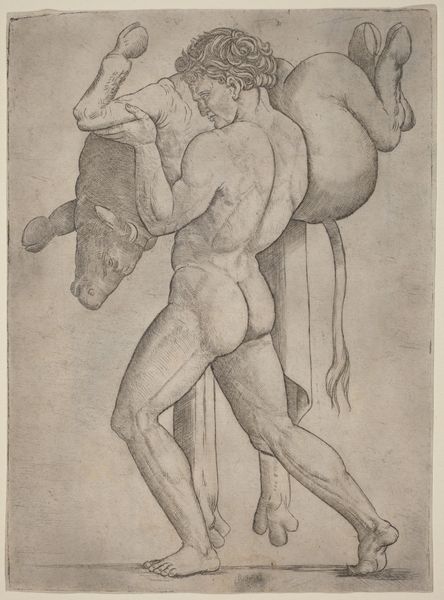
drawing, print
#
pencil drawn
#
drawing
#
amateur sketch
#
toned paper
#
light pencil work
#
animal
# print
#
pencil sketch
#
personal sketchbook
#
female-nude
#
pencil drawing
#
sketchbook drawing
#
pencil work
#
sketchbook art
#
male-nude
Dimensions: Mount: 13 3/8 in. × 10 1/4 in. (34 × 26.1 cm) Sheet (trimmed): 9 5/16 × 9 3/8 in. (23.6 × 23.8 cm)
Copyright: Public Domain
Editor: Here we have Léon Davent’s "Woman Being Carried to a Libidinous Satyr," created sometime between 1540 and 1556. It’s a print, showcasing a scene that feels… charged, to say the least. There’s a lot going on with the figures and their poses. As an iconographer, what strikes you when you look at this piece? Curator: The enduring power of classical myths and how artists consistently reimagine them to explore humanity’s complex relationship with desire, power, and morality. Note how Davent borrows visual language from antiquity, then reframes it. What feelings does this reframing trigger in you? Editor: A sense of unease, definitely. The figures are idealized but there’s also an underlying tension. Is that contrast typical for depictions of satyrs during the Renaissance? Curator: Absolutely. Renaissance artists frequently used classical imagery to explore both the beauty and the darker aspects of human nature. The satyr, a symbol of untamed lust, juxtaposed with the woman, evokes that conflict. How does the positioning of the figures inform your interpretation of the dynamic in the drawing? Editor: The women are carrying each other, but the Satyr stands apart, the object of their movement but disconnected from the task. I get the feeling it might be warning against something. Curator: You bring an important point here. Think of cultural memory and the transmission of such symbols, the weight such visual short-hands hold in time and how their significance change with it. We should be very aware of reading from a contemporary moral position. What do you take away now? Editor: I see the satyr and the woman both carrying a certain cultural memory – the Satyr, of pagan freedoms, the woman perhaps more contemporary morality and expectations - and I realize it's impossible for me to meet it with neutrality. Curator: A productive experience! Understanding that, what appears familiar from the past always holds a distorting mirror to our own present-day values, allows a more thoughtful view of history.
Comments
No comments
Be the first to comment and join the conversation on the ultimate creative platform.

